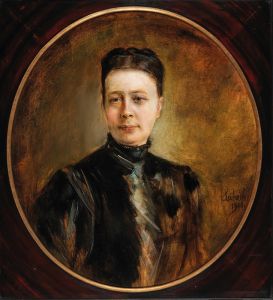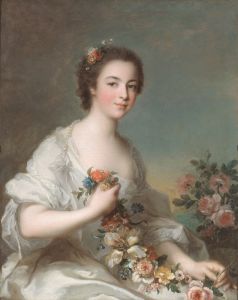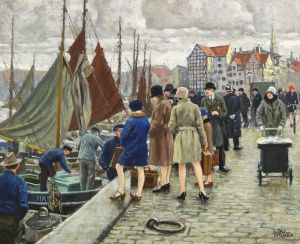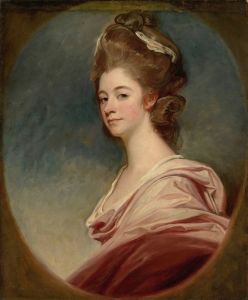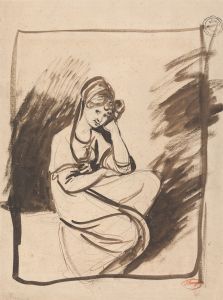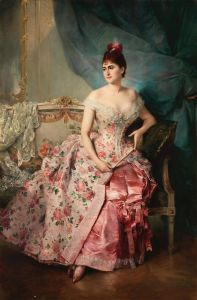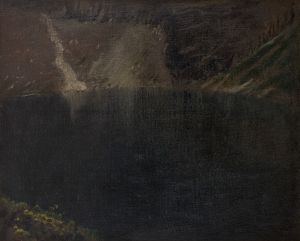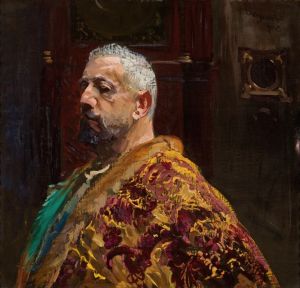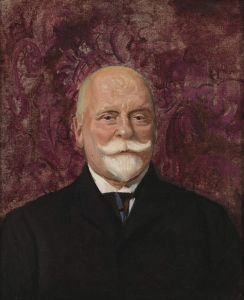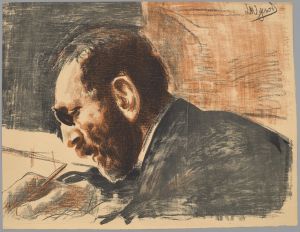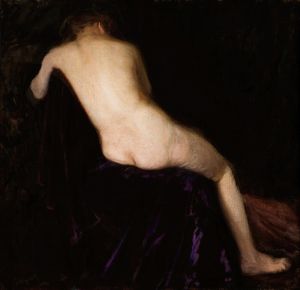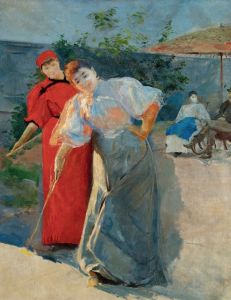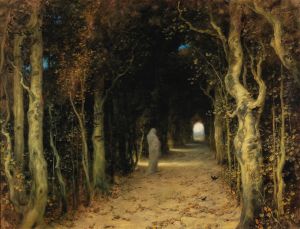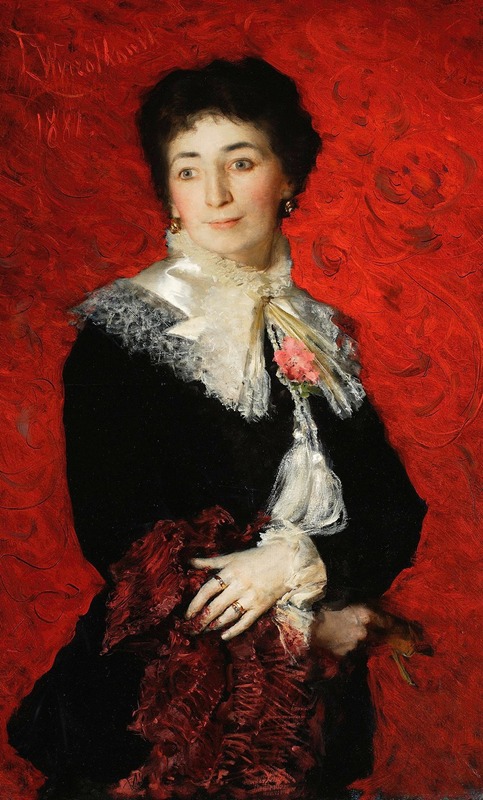
Portrait of a lady
A hand-painted replica of Leon Wyczółkowski’s masterpiece Portrait of a lady, meticulously crafted by professional artists to capture the true essence of the original. Each piece is created with museum-quality canvas and rare mineral pigments, carefully painted by experienced artists with delicate brushstrokes and rich, layered colors to perfectly recreate the texture of the original artwork. Unlike machine-printed reproductions, this hand-painted version brings the painting to life, infused with the artist’s emotions and skill in every stroke. Whether for personal collection or home decoration, it instantly elevates the artistic atmosphere of any space.
Leon Wyczółkowski was a prominent Polish painter, known for his contributions to the Young Poland movement and his diverse artistic style that spanned various genres and techniques. His work "Portrait of a Lady" exemplifies his skill in portraiture, a genre in which he excelled and gained significant recognition.
Wyczółkowski was born on April 11, 1852, in Huta Miastkowska, Poland. He studied at the School of Fine Arts in Warsaw and later continued his education at the Academy of Fine Arts in Munich. Throughout his career, Wyczółkowski was influenced by various art movements, including Impressionism and Symbolism, which is evident in his use of color and light.
"Portrait of a Lady" is one of Wyczółkowski's many portraits that capture the essence and character of his subjects with remarkable detail and sensitivity. While specific details about this particular painting, such as the identity of the lady or the exact date of creation, are not well-documented, it is consistent with Wyczółkowski's broader body of work, which often featured members of the Polish intelligentsia and aristocracy.
Wyczółkowski's portraits are celebrated for their psychological depth and the artist's ability to convey the personality and mood of the sitter. He often employed a realistic style, paying close attention to the textures of fabrics and the subtleties of facial expressions. His use of light and shadow adds a dynamic quality to his portraits, creating a sense of immediacy and presence.
In addition to his portraits, Wyczółkowski was known for his landscapes, still lifes, and genre scenes. He was a master of various techniques, including oil painting, watercolor, and pastel, which allowed him to experiment with different effects and styles. His versatility as an artist is reflected in the wide range of subjects and themes he explored throughout his career.
Wyczółkowski was also a respected teacher and served as a professor at the Academy of Fine Arts in Kraków. His influence extended to a new generation of Polish artists, and his contributions to Polish art were recognized during his lifetime and continue to be appreciated today.
The artist's legacy is preserved in numerous Polish museums, including the National Museum in Warsaw and the National Museum in Kraków, where many of his works are held. "Portrait of a Lady," like many of his other paintings, remains an important part of Poland's cultural heritage, showcasing Wyczółkowski's exceptional talent and his ability to capture the human spirit through art.
In summary, while specific details about "Portrait of a Lady" are limited, the painting is representative of Leon Wyczółkowski's esteemed work in portraiture. His ability to depict his subjects with realism and emotional depth has secured his place as one of Poland's most important artists of the late 19th and early 20th centuries.





